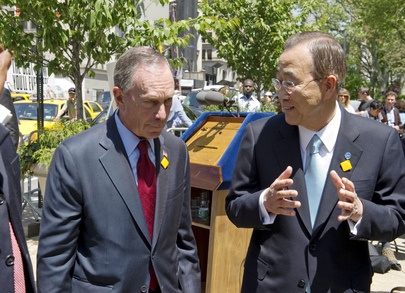
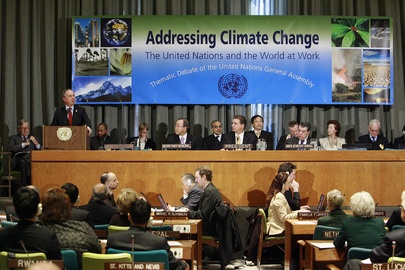
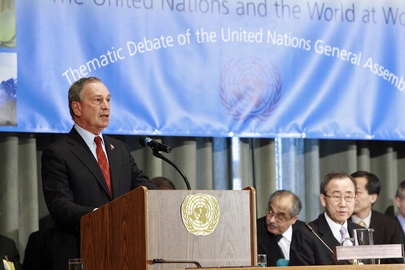
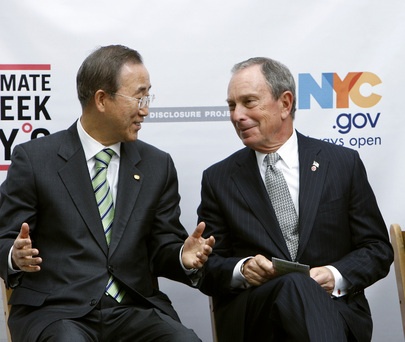
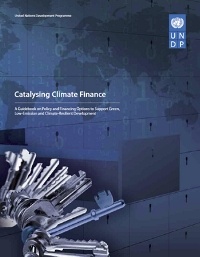
The United Nations Development Programme (UNDP) today launched a guidebook (Last photo)that provides advice to decision-makers in developing countries on how to tap into growing environmental finance markets as funding becomes increasingly available to tackle the challenges of climate change.
Cleaner Energy
Meanwhile, Secretary-Ban today stressed the role of mayors in creating greener and prosperous societies that will draw energy from clean sources. “As mayors, you play an important leadership role in curbing emissions and strengthening resilience within your communities,” Mr. Ban said in a message to the two-day Mayoral Summit on Climate Change that got under way today in the Ecuadorian capital, Quito. “I encourage you to join forces, share ideas and learn from each other’s efforts,” the Secretary-General added. (From UN News Centre Sources)
With New York City as the UNHQ home, Mayor Mike Bloomberg and UN Secretary General Ban Ki-moon have been increasingly coordinating and cooperating on local and global climate issues. (Photos above) Mayor Bloomberg represented NYC in the "40 Mayors" Summit in Quito.
Guidebook: “Catalyzing Climate Finance”
The guidebook, entitled “Catalysing Climate Finance,” draws on UNDP’s experience managing hundreds of climate projects in 140 countries over the past two decades. It contains step-by-step guidance for identifying and implementing a mixture of public policies and funding instruments to raise climate finance. According to Rebeca Grynspan, UNDP Associate Administrator.
“In the absence of effective capacity building and appropriate advisory services, there’s a significant risk that only a few emerging economies will fully benefit from these positive developments, By some estimates around 90 per cent of investments in clean energy go to G20 [Group of 20 economies] countries and the remaining 10 per cent go to the rest of the world,”
Between 2009 and 2010, clean energy sector investments worldwide grew by 30 per cent to a record $243 billion, according to UNDP. Only about one tenth of the investments went into developing economies, which could benefit from greener, less carbon-intensive growth. Most governments lack the knowledge and capacity to enter the complex and highly technical climate finance landscape, where more than 6,000 equity funds and scores of international public funds and carbon markets are active.
“UNDP’s global presence, expertise in capacity building, and extensive development finance experience allow us to help countries in this process, by supporting them to develop capacities to attract and drive investments towards sustainable human development,” said Ms. Grynspan.
Establishing Access
Governments in developing countries face three major challenges when planning a green, low-emission and climate resilient future – gaining access to new and innovative climate finance sources; creating links between climate change strategies and national development objectives; and identifying how to use limited public finance resources to attract private capital, according to UNDP.
“Without doubt public funding is a key element in this equation, alone it will be insufficient to transform economies. It needs to play a critical role in creating an environment conducive to catalysing larger-scale investment,” added Ms. Grynspan.
More Reports at “Ecology Diplomat” Channel -
diplomaticallyincorrect.org/c/ecology-diplomat
By Ambassador Muhamed Sacirbey
Facebook Become Fan at “Bosnia TV” and “Diplomatically Incorrect”
Twitter – Follow us at DiplomaticallyX









